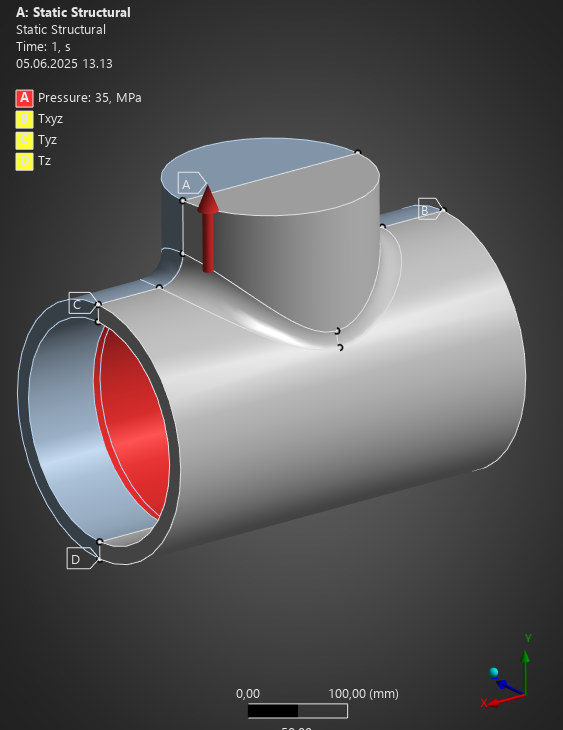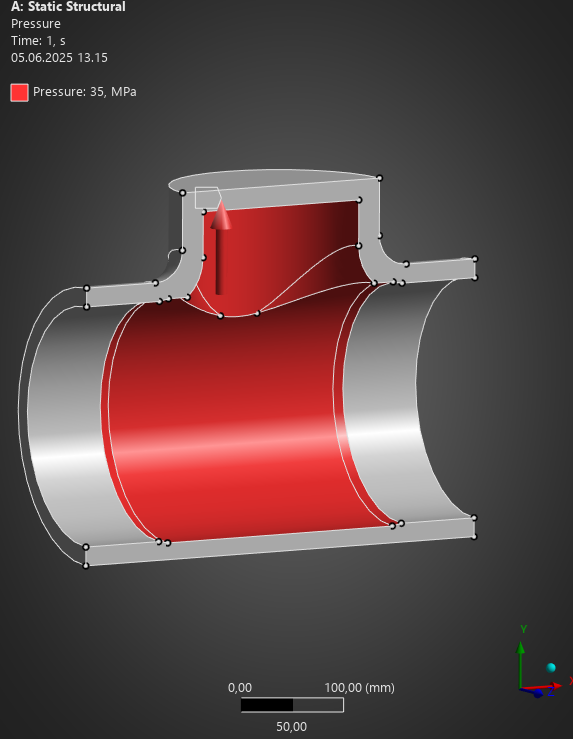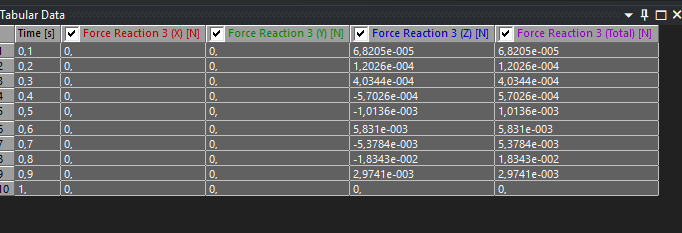TAGGED: constraint
-
-
June 5, 2025 at 11:19 am
sna
SubscriberHi!
Is it possible to constrain a pressure vessel using the 3-2-1 method in a Nonlinear Analysis?
I've constrained my model as shown below.
(pressure is applied intentionally as shown)
In a linear analysis my reaction forces are on the order of 1.0e-05
In a Nonlinear analysis my reactions are on the order of 4000N
Thank you!
-
June 5, 2025 at 12:25 pm
peteroznewman
SubscriberIs there a stress rise at the three supports? How does that compare with the maximum stress in the model?
Is 4000 N a significant force in this model or is it insignificant and could be ignored? Compare 4000 N with 35 MPa times the area it is applied to.
What are the six signed component values of reaction force? Do they add up to a near zero number in each component direction?
-
June 5, 2025 at 12:46 pm
sna
SubscriberHi!
I just re-meshed and re-did the nonlinear results (analysis did not fully converge, which is OK as I am interested in the plastic collapse load)
The reaction force is now 3300N, which is a low number compared to the force on e.g. the "blind flange" with an internal diamter of 173mm:
Displacements shows a "stretched" element at the Txyz constraint (Picture is True Scale)

The von Mises Stress appears to be nice and symmetric as expected (animation also looks symmetric)
XYZ Reactions:
YZ Reactions:
Z Reactions:
Thank you!
-
-
June 5, 2025 at 1:27 pm
peteroznewman
SubscriberYou could also edit the Force Convergence tolerance under Nonlinear Controls of the Analysis Settings. The default is 0.5%, which is about the value of 4/822 kN. If you change to a value of 0.01%, you may have to wait for a few more iterations for each step to converge, but the size of the reaction forces may be reduced.
An alternative support to 3-2-1 on three nodes is to use a Remote Displacement, Behavior = Deformable on one end face and set all six DOF to zero. The deformable behavior will not add any stiffness to the structure and the distributed nature will not cause any displacement spikes.
-
June 12, 2025 at 9:11 am
Factoo,Anjum
Subscriberyou can use symmerty and reduce the problem size and also overcome this issue. Your model & pressure load seems to be symmetric about XY and YZ plane.
-
- You must be logged in to reply to this topic.



-
3236
-
1031
-
968
-
859
-
798

© 2025 Copyright ANSYS, Inc. All rights reserved.














